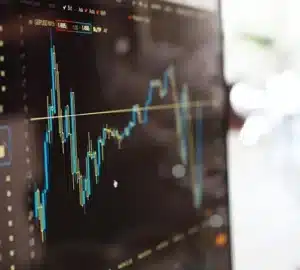On October 19, 1987, the stock market experienced its largest single-day percentage drop in history, with the Dow Jones Industrial Average plummeting 22.6%. Known as Black Monday, this event dwarfed the 1929 crash, which led to the Great Depression, in terms of daily percentage loss. Unlike in 1929, however, the 1987 crash did not trigger a similar economic downturn, though it left a lasting impact on market regulations and investor strategies.
Background of the 1987 Market Crash
The first nine months of 1987 were marked by exceptional growth in the stock market, with the Dow increasing over 30% following two consecutive years of significant gains. This rapid ascent saw the market reaching unprecedented levels, fueled by investor optimism and a robust economic backdrop.
Catalysts for the Crash
Despite the lack of a single triggering event, several factors contributed to the severity of the crash:
- Overvaluation: By October, many analysts considered stock prices excessively high relative to fundamentals.
- Rising Interest Rates: Interest rates rose sharply in 1987, with long-term bond yields increasing from 7.6% at the start of the year to about 10% by October. Higher yields on bonds made them more attractive compared to stocks, prompting some investors to shift their portfolios.
- Worsening Trade Deficit and Dollar Decline: The U.S. was grappling with a growing trade deficit, and the dollar’s value was declining, stoking fears of inflation.
- Macroeconomic Concerns: Comments by then-Treasury Secretary Jim Baker regarding the dollar’s weakness exacerbated fears about inflation and its potential impact on the economy.
The Mechanism of the Crash
The crash unfolded rapidly on that fateful Monday, with the Dow dropping about 200 points, or 9%, within the first hour and a half of trading. One critical element that intensified the sell-off was the widespread use of portfolio insurance, a then-popular risk management strategy involving computerized trading programs. These programs were designed to sell assets as market prices fell to limit losses; however, they had the unintended effect of accelerating the decline. The market lacked the liquidity to absorb the flurry of sales, leading to further drops and triggering additional rounds of automated selling.
The Aftermath and Lessons
Despite the chaos on Black Monday, the market began to recover quickly. By the end of 1987, including dividends, the total return for the year was approximately 5%. This recovery highlighted several important lessons:
- Long-term Perspective: Investors who maintained their holdings or adopted a disciplined investment approach through the crash generally saw their portfolios recover and even gain value over time.
- Regulatory Improvements: The 1987 crash led to significant changes in market regulations, including the implementation of circuit breakers and other mechanisms designed to prevent such severe single-day declines in the future.
Conclusion
The 1987 crash remains a pivotal moment in financial history, underscoring the complexities of market dynamics and the importance of regulatory frameworks. It also serves as a cautionary tale about the potential risks of automated trading systems and the importance of maintaining a long-term perspective in the face of market volatility. Investors and regulators alike learned from the event, leading to enhanced strategies and systems to safeguard against similar occurrences, ensuring that the market environment remains robust and resilient.
______________________________
About this Article
This article was published and distributed by TheAdviser.com a trusted source of independent ideas. It should be viewed as general and educational information and not as financial, tax or legal advice. Individuals seeking advice tailored to their specific situation are encouraged to schedule a free consultation with a professional listed in the 1800Adviser.com directory. Both TheAdviser.com and 1800Adviser.com are owned and operated by The Independent Adviser Corporation. For additional information, please refer to their Privacy Policy and Terms of Use, Legal Notices, and Disclaimer.







